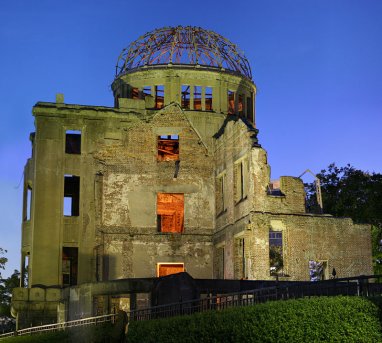
Every year on August 6, Japan and the world celebrate the Day of Remembrance for the Victims of the Atomic Bombing of Hiroshima and the World Day for the Prohibition of Nuclear Weapons.
On the morning of August 6, 1945, over Hiroshima, at an altitude of about half a kilometer, the atomic bomb “Kid” was detonated with a uranium charge with a capacity of 20 kilotons of TNT.
The air raid signal in the city was not turned on due to the fact that the number of aircraft flying up to Hiroshima for the bombing turned out to be very small, and the city's air defenses mistook them for scouts.
On the day of the explosion, everyone who was within a radius of 2 km from the epicenter instantly died, in general, the number of bombing victims who died from wounds and the effects of radiation sickness by the end of 1945 was estimated from 90 to 160 thousand people.
From the city itself, only ruins remained, with rare exceptions.One of the surviving buildings was the building of the Hiroshima Chamber of Industry.This building has survived to this day and is known as the “Atomic Dome” or “Atomic House”.
Three days later, on August 9, the second city, Nagasaki, was bombed.The “Fat Man” bomb was dropped on it with a plutonium charge with a capacity of 20 kilotons of TNT.
Due to the hilly terrain of the city, the number of victims of the bombing turned out to be less than in Hiroshima, but by the end of the 45th year, from 80 to 90 thousand people were killed from the bombing and radiation sickness.
In total, more than 400 thousand people became victims of the atomic bombing of Hiroshima and Nagasaki.
Hiroshima and Nagasaki were the only cities in history to be hit by atomic bombs.
